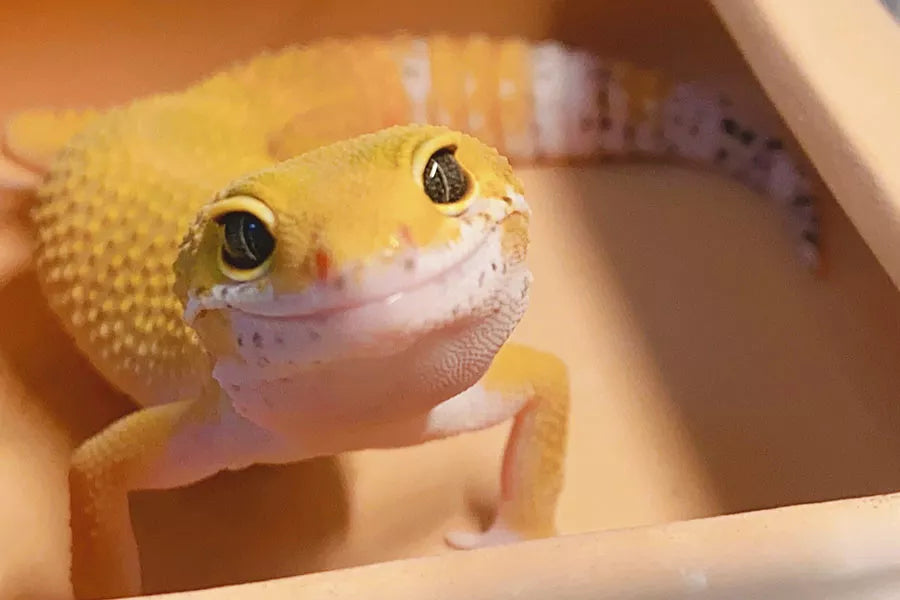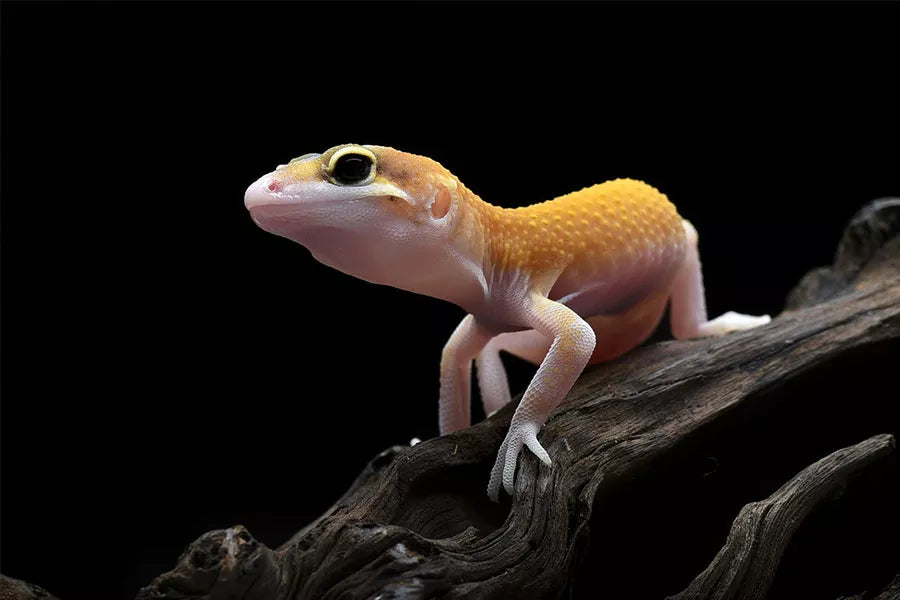🦎 How to Care for a Pet Leopard Gecko: A Beginner’s Guide
Leopard geckos are one of the most popular reptile pets—and for good reason! They're docile, easy to care for, and full of personality. Whether you're a new reptile keeper or thinking about adding a leopard gecko to your home, here’s everything you need to know to give your gecko a healthy and happy life.
🏡 1. Create the Perfect Habitat
A proper enclosure is the foundation of good leopard gecko care.
- Tank size: A 20-gallon tank is ideal for one adult gecko.
- Substrate: Avoid loose substrates like sand. Instead, use reptile carpet, tile, or paper towels for easy cleaning and safety.
- Hides: Provide at least three hides—one warm, one cool, and one humid.
- Décor: Add rocks, branches, and climbing areas to enrich their environment.

🌡️ 2. Temperature & Lighting
Leopard geckos are ectothermic and rely on external heat sources.
- Temperature gradient: Warm side at 88–92°F (31–33°C); cool side around 75–80°F (24–27°C).
- Night temps: Can drop to 68–72°F (20–22°C) safely.
- Lighting: While not strictly required, low-level UVB lighting (2–5%) can benefit their overall health.
- Heating: Use an under-tank heater or ceramic heat emitter, paired with a thermostat to prevent overheating.
💡 Tip: LuminPacific’s reptile lighting is designed to simulate natural conditions—safe, efficient, and ideal for geckos!
🥩 3. Feeding Your Leopard Gecko
These insectivores thrive on a diet of live bugs.
- Staples: Crickets, dubia roaches, and mealworms.
- Occasional treats: Waxworms or hornworms (high in fat—use sparingly).
- Supplements: Dust feeders with calcium + D3 2–3 times a week, and a multivitamin once a week.
- Water: Always provide a shallow dish of fresh water.

🧼 4. Cleaning and Maintenance
Cleanliness is key to preventing illness.
- Spot clean: Remove waste daily.
- Deep clean: Replace substrate and disinfect the enclosure every 2–4 weeks.
- Humidity: Maintain a humidity hide (~70–80%) to support healthy shedding.
🧍 5. Handling and Socializing
Leopard geckos are generally calm and tolerate handling well.
- Start slow: Let them get used to your hand inside the enclosure.
- Always support their body and avoid sudden movements.
- Limit handling to 5–10 minutes at first, increasing over time.
🚨 6. Health Signs to Watch
Keep an eye out for:
- Loss of appetite
- Lethargy
- Sunken eyes or rapid weight loss
- Retained shed, especially on toes
- Soft jaw or limbs (signs of calcium deficiency)
If you notice these, consult a reptile vet promptly.
❤️ Final Thoughts
Leopard geckos are wonderful companions when cared for properly. With the right setup, consistent feeding, and a bit of patience, your gecko will thrive for many years—some even live up to 20 years in captivity!
Ready to give your gecko the best care possible? Check out LuminPacific’s reptile care collection for trusted lighting, heating, and habitat essentials!




